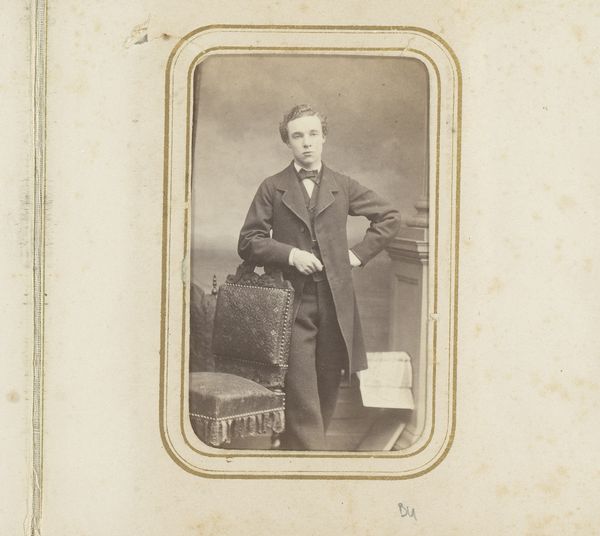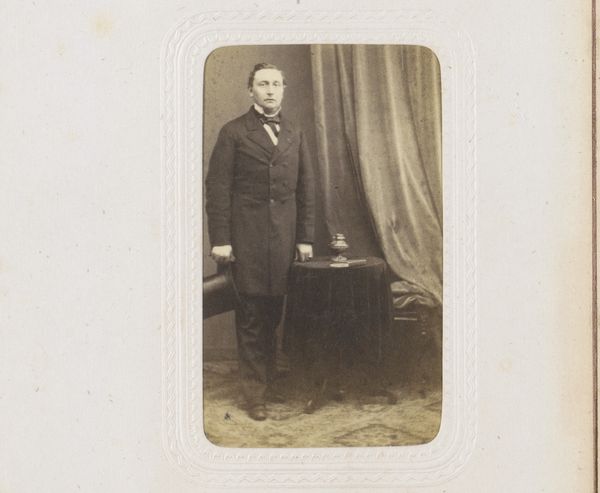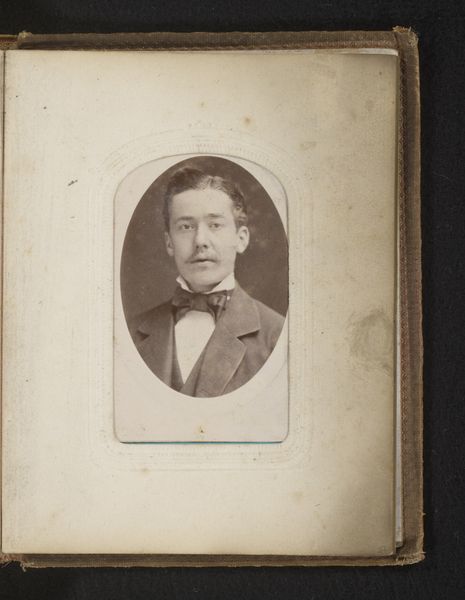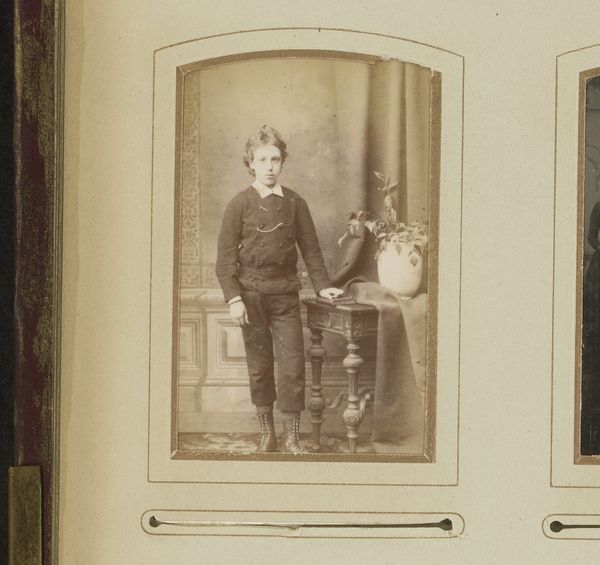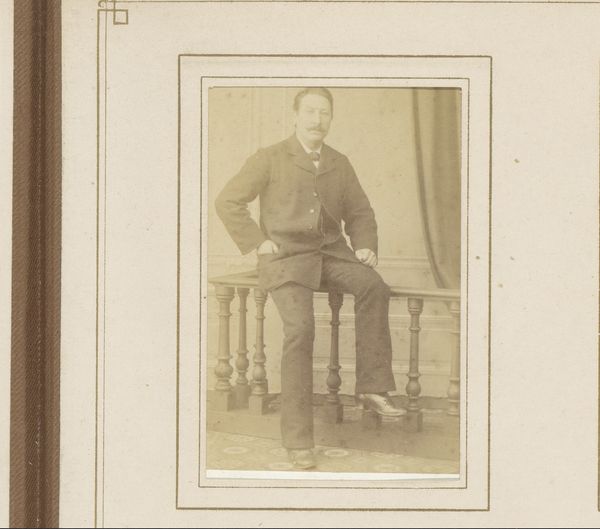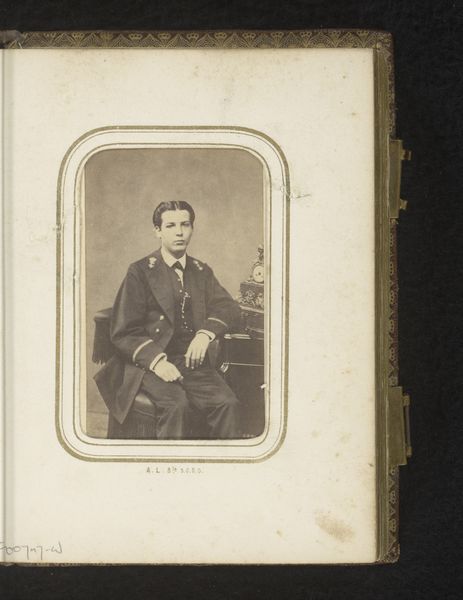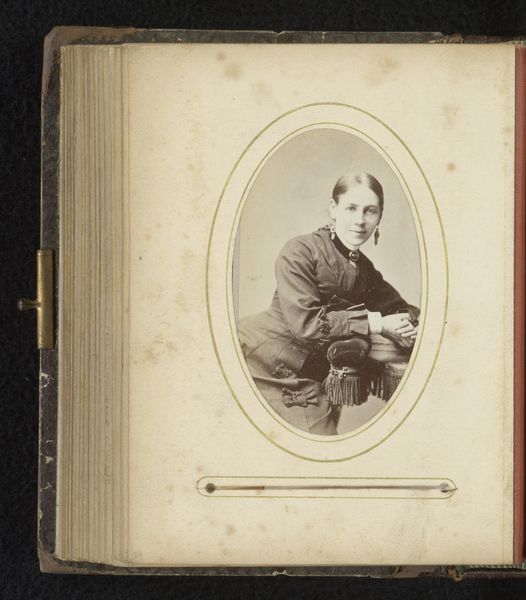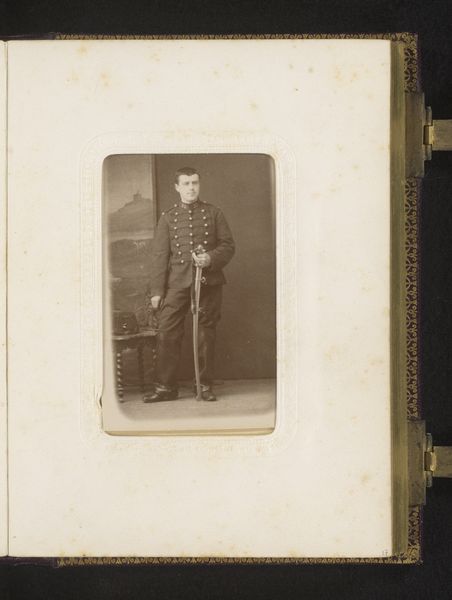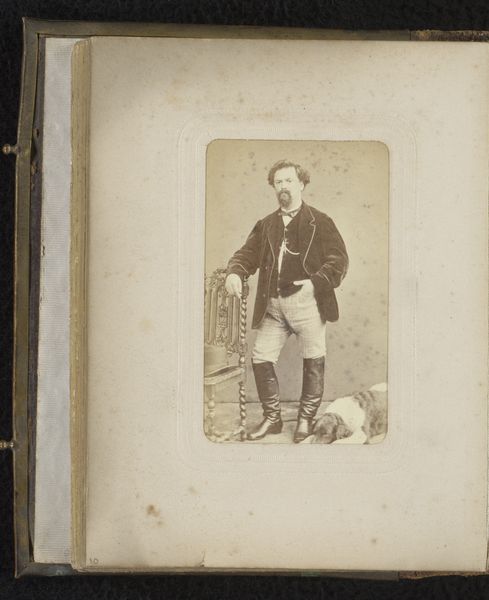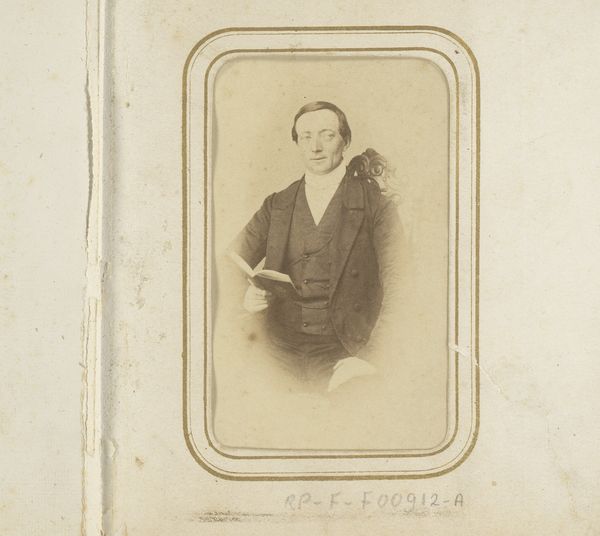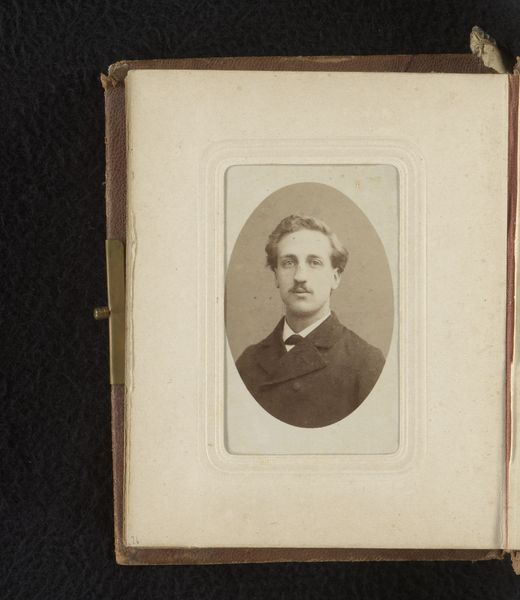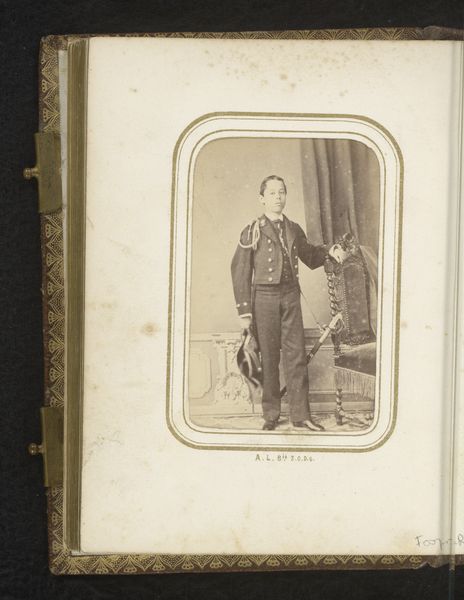
photography
#
portrait
#
photography
#
realism
Dimensions: height 82 mm, width 50 mm
Copyright: Rijks Museum: Open Domain
Editor: Here we have a photographic portrait, "Portret van een zittende man met wandelstok in de hand" made by C.F. Schmidt sometime between 1870 and 1872. I find the man's slightly stern expression quite compelling. What do you make of it? Curator: That sternness, as you call it, is fascinating. Consider the walking stick; it’s more than a prop. It speaks to a certain social status, sure, but it’s also a symbol of support, of perhaps needing assistance, even as it projects an image of control. How does the gaze, combined with the cane, make *you* feel? Editor: I suppose there's a vulnerability beneath the surface. He wants to appear self-assured, but maybe he isn’t entirely? It also seems posed and still. Curator: Precisely. Photography at that time demanded stillness, creating a self-conscious moment. Think about what the act of posing for a photograph meant then. It was an event, carefully considered. The "realism" in this portrait shows his human desire for an enduring legacy. What does enduring mean, and for whom? Editor: A legacy, right. And maybe he's aware that this image might outlive him? Now, I'm considering how different it is from our Instagram culture of quick fleeting images. Curator: Absolutely! And notice the patterned border. It creates a symbolic frame, containing and elevating the image. How might we interpret this visual cue alongside the sitter's expression? Editor: It's like an assertion of worth, a reminder this is meant to be significant. I’m really noticing all these symbols, it changes how I see the portrait! Curator: And that’s the enduring power of visual imagery: cultural memory and the layers of symbolic meaning. I'm really beginning to see it now.
Comments
No comments
Be the first to comment and join the conversation on the ultimate creative platform.

